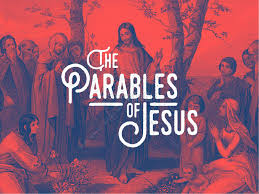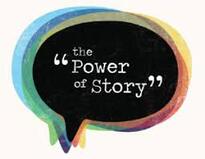
Among first century Jews, Rabbis generally had one of two teaching styles: Halakha or Hagadda. Halakha focused on concrete rules to follow. Hagadda focused on provocative story-telling that explored what God was all about in more powerful ways than abstract statements could deliver. Jesus preferred one of these methods to the other.
Halakha, or rules derived from the Law, form a set of spiritual disciplines or directions for how to be faithful to God in each generation. To create Halacha, people would pose questions or present conundrums to rabbis, and the rabbis would make reasonable judgment calls based on the written Jewish law about how to navigate life in line with God’s commands. The judgment calls made in each case would comprise a constantly growing list of rules and precedents to follow. Regardless of how each rabbi gave his instructions, the end-goal was to guide people’s behavior. Certain activities were “permitted” while others were “forbidden.” As you would imagine, this practice created a burden. People had to remember and obey a constantly growing number of legal judgments.
Haggada took a different tact. It avoided issuing particular mandates in order to focus on the values behind behaviors. To press into such values that permeate all of life, rabbis told stories. The Hebrew word Haggada comes from the Hebrew verb higgîd, which means “to narrate.” Haggada were stories. And not just stories, but relatable stories that rabbis would tell to bring a point to life. The stories were designed to catch people’s attention and make you think about things in a whole new way. They were designed to deliver a more powerful punchline than any simple statement ever could.
A classic example of Jewish Haggada comes from Rabbi Meir:
R. Meir used to say: what does it mean “one that is hanged is a curse against God?” This can be compared to two twin brothers, identical to one another, one ruled over the whole world, and the other took to highway robbery. After a while the robber was caught, and they were crucifying him on the cross. All passers by said: the king is on the cross. For this meaning it was written: “For he that is hanged is a curse against God.” — Mishnah Sanhedrin 6:5
The people mistook a criminal for the one who ruled over the whole world because they were identical twins. And who would Jews think ruled the whole world? That’s right. They would think of God himself. And why did Rabbi Meir want people to be abhorred by the notion of crucifying God himself? Because every person, be they righteous or a robber, bears the image of God!
It’s a story that brought to life the truth of Genesis chapter one about how people were created. It explains why the Jews believed crucifying anyone was a condemnation of God himself. But you have to ponder the story for a moment to get the point. Instead of just saying people are the spitting image of God, you imagine the paradox of a sinner and God being identical twins. It makes you see human identity in a whole new way.

While Halakha can show you how to obey God, Haggada introduces you to God’s heart. Jewish Midrashim (or biblical interpretation) recorded in the third century AD, and likely representative of earlier Jewish oral teaching, describes the power of Haggada this way:
So you want intimacy with the One Who spoke the world into being? Then study Haggada, for you will thereby become familiar with the One Who spoke the world into being and will cling to His ways. – Sifre Deut 49
Just like Jesus was attacked by the Pharisees, so other story-telling rabbis were attacked by opponents focused on interpreting how to apply Torah to contemporary life in excessive and exact rules. For example, Rabbi Chaya ben Abba berated his contemporary, Rabbi Abbahu, because his provocative stories made him a popular teacher among the people. Everyone liked Abbahu’s stories, but Chaya thought they should focus on the rules. When Rabbi Chaya confronted Rabbi Abbahu about his unimportant parables, Rabbi Abbahu responded with a poignant parable!
Rabbi Abbahu answered Rabbi Chaya ben Abba: “I will tell you a parable. To what may the matter be compared? It may be compared to two men. One of them was selling precious stones and the other various kinds of small ware. To whom do the people rush? Is it not to the seller of various kinds of small ware? - b. Sota 40a

Stories don’t negate laws; they bring the reality behind them to life. As Brad Young states in his book on The Parables (p. 8), “By focusing on the heart and the imagination, haggadah reaches people on all levels, from the learned to the untutored, in the ways of the Torah.” A good story engages the audience. It requires them to think about the plot rather than just obey an instruction. People experience surprise or suspense in a good story that abstract aphorisms cant create for the listener.
When “an expert in the Law” challenged Jesus with the question “Who is my neighbor?” because he wanted to prove that he had “loved his neighbor as himself,” Jesus answered the question with a story. He told the Parable of the Good Samaritan (Luke 10:25-37). If you recall, the Good Samaritan crossed the racial divide of his day and brought a wounded Jew to a nearby hotel to recover.
Why did Jesus answer a legal expert’s question with a story? Because Jesus wanted to change the expert’s perspective. Jesus needed to expand his definition of neighbor beyond a small and attainable definition of “your fellow law-abiding and ritually pure Jew.” So he told a short story about the Good Samaritan who crossed racial boundaries and sacrificed financially to help out a wounded and unclean victim of highway robbery. It was a more powerful way to say, “Love your enemies because enemies are your neighbors too.” Jesus had taught “love of enemy” in plain words at other times, but he told the story so the truth could hit home in an irrefutable way.
Jesus did the same thing when he told the story of the Prodigal Son. Narrating how the Father ran to embrace his foolish son who had squandered his inheritance corrected a shrinking view of God’s love. God didn’t just love the good guys who followed all the rules. He loved everyone no matter what poor decisions they had made in their life.
Sometimes Jesus told more cryptic stories to create intrigue. His Parable of the Sower is the prime example. After Jesus described how the seed grew in the good soil but failed to grow strong in three other inconducive locations, his disciples still didn’t know what he was saying. It wasn’t until they asked for a detailed interpretation in private conversation that they got the point.
In the following exchange, the disciples asked Jesus straight up: “Why do you speak to people in parables?” (Matthew 13:10). Jesus answered that many people don’t have the heart to learn anymore. They have been hardened to what God really wanted to teach them. So some stories Jesus told were designed to both intrigue the open-minded and identify the hard-hearted (Matthew 13:11-17). They were a litmus test for true followers.
Whether Jesus told a story to illustrate a point powerfully or mask its full meaning, he wanted to trigger people. Whether it inspired you or confused you, the stories provoked a reaction. They were designed to reimagine the world so you could clearly see how you fit in to what God really cared about.
Nathan’s Provocative Parable about David
In 2 Samuel 12, we find one of the most powerful parables in Scripture that moved the great king David to repent.
The Lord sent Nathan to David. When he came to him, he said, “There were two men in a certain town, one rich and the other poor. 2 The rich man had a very large number of sheep and cattle, 3 but the poor man had nothing except one little young lamb he had bought. He raised it, and it grew up with him and his children. It shared his food, drank from his cup and even slept in his arms. It was like a daughter to him. 4 “Now a traveler came to the rich man, but the rich man refrained from taking one of his own sheep or cattle to prepare a meal for the traveler who had come to him. Instead, he took the young lamb that belonged to the poor man and prepared it for the one who had come to him.” 5 David burned with anger against the man and said to Nathan, “As surely as the Lord lives, the man who did this must die! 6 He must pay for that lamb four times over, because he did such a thing and had no pity.” 7 Then Nathan said to David, “You are that man!”
It is normal to assume the poor man is Uriah, and the rich man takes his only young lamb, Bathsheba. But in fact, it is the exact opposite. David never kills Bathsheba. He actually sleeps with Bathsheba, and then has her husband Uriah killed. So Uriah is the young lamb that the rich man takes and slaughters for the traveler.
How do I know? The matching language between the parable and the narrative in 2 Samuel 11 make it clear. When David tries to get Uriah to go home to Bathsheba and sleep with her, Uriah responds, “How can I go home and eat, and drink, and lay with my wife?” (2 Samuel 11:11). Eat, drink, and lay together are the same actions that the poor man does with his young lamb. As 2 Samuel 12:3 states, “It shared his food, drank from his cup and even slept in his arms.” These acts are intimate and indicate the love that they shared.
Who is the traveler? The traveler represents the baby that Bathsheba birthed. Just as the traveler stayed for only a while, so the baby would only stay for a while before it died. David’s attempt to protect the baby would fail. When his child is on its deathbed, David says, “I am going toward him, but he will not return to me” (2 Samuel 12:23). The verb “going” is the same verb used to describe the traveler (“one who goes”) who came to the rich man. These literary connections create a powerful parable that spells out the consequence for David’s actions.
David’s lust for power and his lust for beautiful Bathsheba bathing on the roof leads him to murder her husband. In Nathan’s powerful parable, David sees the selfish and egregious act of the rich man. He calls for the rich man’s death. And Nathan turns the parable around on David and calls him out.
What David tried to hide in his own life becomes an obvious impropriety in the parable. He is the man who must pay for his inappropriate abuse of power.
Before he knows the parable is a veiled rebuke of his own rape and murder, he calls for the rich man to pay back four times what the little lamb was worth. Why four times? Paying back four times what you stole was the same act of restitution that Zacchaeus makes in Luke 19. It was the original standard for stealing someone else’s sheep established in Exodus 22:1.
David was responding like a righteous king who would demand justice for theft. But that justice would have to be paid back with human lives. As Nathan would say in his final pronouncement of judgment against David in 2 Samuel 12:11-12, “This is what the Lord says, ‘I am going to bring disaster on you from your own family: I will take your wives and give them to another before your very eyes, and he will sleep with them publicly. You acted in secret, but I will do this before all Israel and in broad daylight.’” The rest of David’s life would play out this story of his own son taking his wives from him. He would lose his baby and his other baby’s mothers. And he would know it is a fair judgment for his crimes.
The power of a parable cannot be underestimated. Stories make it easy for everyone to see what is right and wrong. They reveal God’s merciful and just heart in a way everyone can understand, from the greatest of kings to the simplest of men. That’s why Jesus used them to deliver powerful messages about who God is and what he is all about.
Jesus’ goal wasn’t for people to take notes on his teaching or correctly phrase their theology. It wasn’t to add rules and argue for a particular application of God’s ancient instructions. Jesus wanted to capture the heart and imagination of his hearers. He wanted to produce inspired followers not seasoned debaters. He wanted to rewire people’s vision of God so they could encounter the real God. His stories did that.
Jesus’ stories introduce you to a bigger story. They don’t just tack on another “to-do” to your already cumbersome list. Jesus knew that personal holiness is not legislated, but rather provoked through redemptive imagination. When you realize who God is and how you fit into the story he is writing, you can clearly see how to recognize him and join what he is doing.
It’s time we start telling better stories rather than simply offering more abstract answers. Jesus did not act like rabbis obsessed with Halakha (legal rulings) who constantly added to God's expectations. He spent more time undoing excessive rules created by other rabbis than he did spelling out what the rules should be. It’s an example for us to follow today.
I have personally seen the power of keeping a few carefully crafted stories ready to tell to my children in relevant situations. I have watched former students remember illustrations about being trapped in sin or mimicking mentors more quickly than any imperative I delivered during those lessons. I would encourage you to think of three powerful stories with some surprise or suspense that will get people thinking about how God works in the world. You can start by retelling updated versions of Jesus‘ parables, but you will benefit personally and bring unique passion to telling stories that you have carefully crafted to help people see God and his ways.







 RSS Feed
RSS Feed
